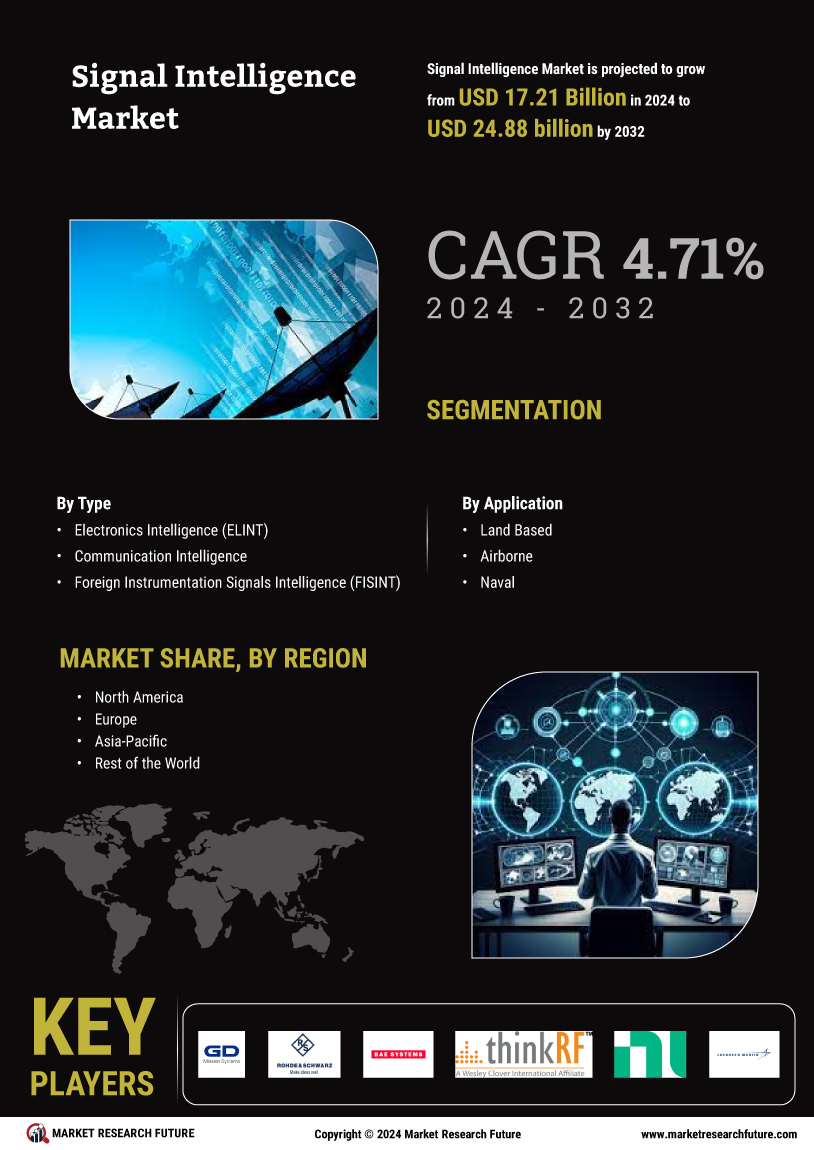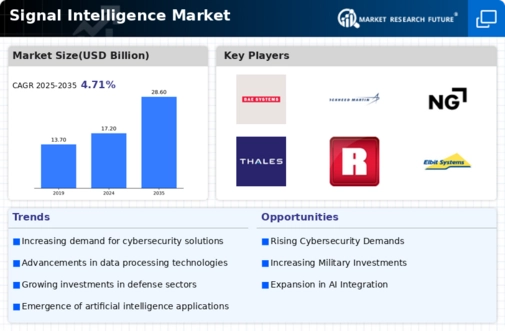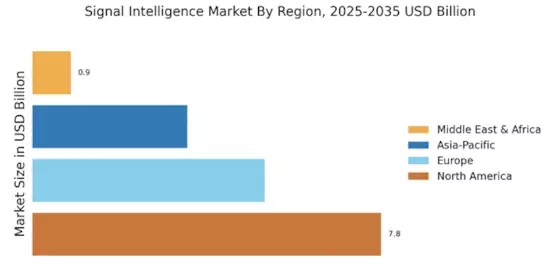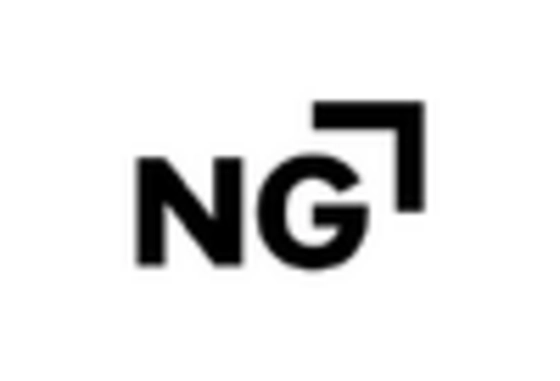Advancements in Technology
The Signal Intelligence Market is experiencing a surge in technological advancements, particularly in data processing and analysis capabilities. Innovations in machine learning and artificial intelligence are enhancing the ability to collect and interpret vast amounts of signal data. This evolution is not merely incremental; it is transformative, allowing for real-time analysis and decision-making. As a result, organizations are increasingly investing in sophisticated signal intelligence systems to gain a competitive edge. According to recent estimates, the market is projected to grow at a compound annual growth rate of over 10% through the next five years, driven by these technological enhancements. The integration of advanced algorithms and processing power is likely to redefine operational capabilities within the industry.
Rising Geopolitical Tensions
The Signal Intelligence Market is significantly influenced by the rising geopolitical tensions across various regions. Nations are increasingly prioritizing national security and defense, leading to heightened investments in signal intelligence capabilities. This trend is particularly evident in areas where territorial disputes and cyber threats are prevalent. Governments are allocating substantial budgets to enhance their surveillance and reconnaissance capabilities, which in turn fuels demand for advanced signal intelligence solutions. Recent data indicates that defense spending related to intelligence, surveillance, and reconnaissance (ISR) is expected to increase, reflecting a broader commitment to safeguarding national interests. This environment creates a robust market for signal intelligence technologies, as countries seek to bolster their strategic advantages.
Emergence of Smart Technologies
The Signal Intelligence Market is being propelled by the emergence of smart technologies, including the Internet of Things (IoT) and smart devices. These technologies generate vast amounts of data that require sophisticated signal intelligence solutions for effective analysis and utilization. As smart devices proliferate, the need for robust signal intelligence systems to monitor, analyze, and secure these devices becomes increasingly critical. The market for IoT is expected to grow exponentially, with projections indicating it could reach over 1 trillion dollars by 2025. This growth presents a unique opportunity for signal intelligence providers to develop tailored solutions that address the specific challenges posed by smart technologies, thereby expanding their market reach and influence.
Increased Demand for Cybersecurity Solutions
The Signal Intelligence Market is witnessing a notable increase in demand for cybersecurity solutions. As cyber threats become more sophisticated, organizations are recognizing the necessity of integrating signal intelligence into their cybersecurity frameworks. This integration allows for proactive threat detection and response, thereby enhancing overall security posture. The market for cybersecurity is projected to reach substantial figures, with estimates suggesting it could exceed 300 billion dollars by 2025. This growth is likely to drive investments in signal intelligence technologies that can provide actionable insights into potential vulnerabilities and threats. Consequently, the intersection of signal intelligence and cybersecurity is becoming a focal point for organizations aiming to protect their assets and data.
Growing Importance of Data Privacy Regulations
The Signal Intelligence Market is also shaped by the growing importance of data privacy regulations. As governments and regulatory bodies implement stricter data protection laws, organizations are compelled to adopt signal intelligence solutions that comply with these regulations. This trend is particularly relevant in sectors such as finance and healthcare, where data sensitivity is paramount. Compliance with regulations not only mitigates legal risks but also enhances consumer trust. The market for compliance-related technologies is projected to grow, indicating a rising demand for signal intelligence systems that can ensure adherence to these regulations. This evolving landscape presents both challenges and opportunities for signal intelligence providers as they navigate the complexities of regulatory compliance.


















Leave a Comment